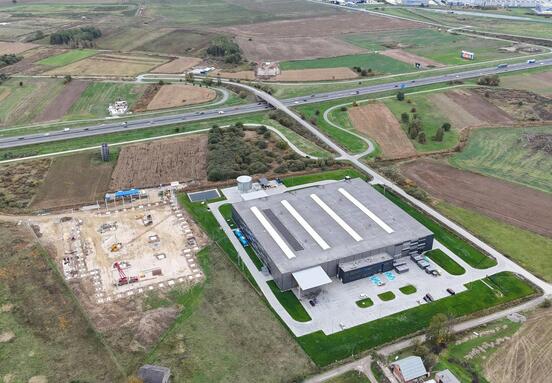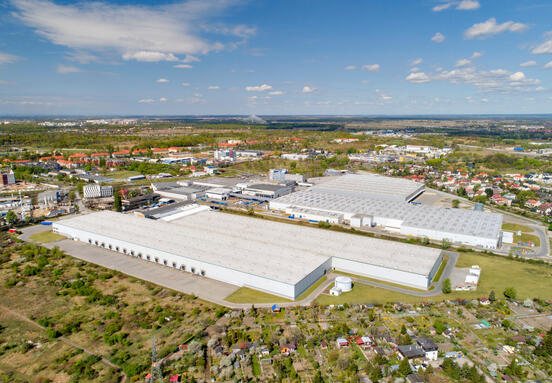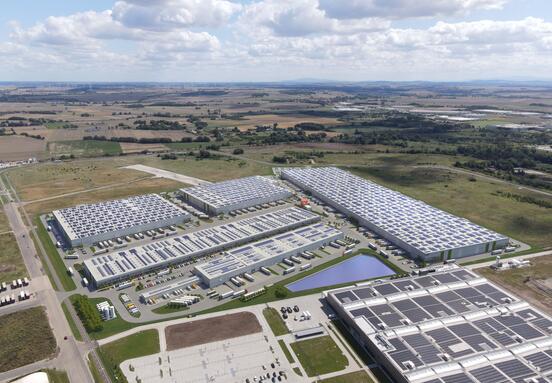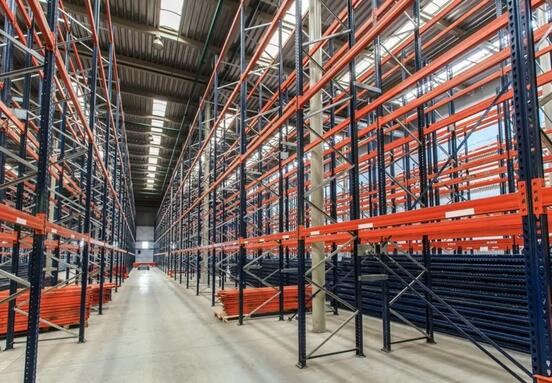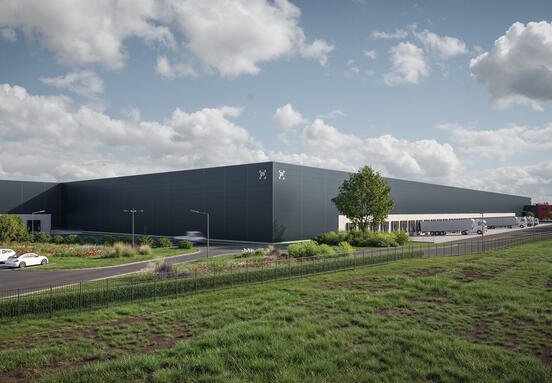The labor market experts at Antal have come together with Cushman & Wakefield and Vastint, who contributed their knowledge of infrastructure and real estate, to prepare the second edition of the Business Environment Assessment Study (BEAS) series of reports providing an in-depth assessment of the business environment of eight Polish cities along with hard market data on their investment potential.
The reports are based on opinions expressed by decision-makers, i.e. chairmen, members of the board and department directors, of companies operating in the Polish market. We analyzed eight factors that make cities more attractive and contribute to their investment potential. Those factors include: infrastructure, labor market indices, educational potential, quality of living and public administration support. Respondents were asked to rate the quality of the business environment in their cities on a scale of 1 to 10. The reports were supplemented by hard market data (on living costs, office rents and salaries) delivered by: Antal, Cushman & Wakefield, Vastint, ABSL, the Central Statistical Office of Poland and the National Bank of Poland.
– The business environment has a big impact on the growth of organizations. Factors such as infrastructure and office space potential translate directly into financial performance. Availability of human capital, high competitiveness, a well-developed business environment, innovative solutions and products are no less important. All of the above factors come together to create a new investment environment that is outlined in our 8-part series of reports on the investment potential of Polish cities – emphasized Artur Skiba, Antal Chairman and Vice-President of the Association of Employment Agencies.
Real estate
Two major strengths of Polish real estate: unconventional offices and attractive pricing
The following factors were taken into consideration when analysing real estate attractiveness in each city: public transit access, office space quality, office space availability, quality of additional amenities in the building or in its close vicinity, office space attractiveness. Depending on the type of investment you are considering, it is advisable to choose the city that scored highest in those areas that are the most important from your perspective. Some organizations will prefer low rent, whereas others will be willing to pay more for creative interior design.
Leaders in the "Real Estate" category:
- Lublin – 8 out of 10
- Tri-City – 4 out of 10
- Kraków – 2 out of 10
- Lublin has once again proven its status as one of the most investor-friendly cities in Poland. Lublin is a great choice for companies that wish to lower operating expenses as it is approximately 20%-30% cheaper to do business there than in Central or Western Poland. Yet, prospective investors usually expect more than just being able to operate on the cheap. Business environment, office quality and availability of amenities that have a positive impact on the quality of living are all considered important and I am happy to say that Lublin delivers in all of those areas – said Agnieszka Gułaś, Negotiator in the Office Space Department, Cushman & Wakefield.
Investors wish to find the best offices at the lowest possible price, thus striking a balance between rent and quality. Office rents in Polish regional cities range from 13.30 EUR per square meter per month in Szczecin, through 14.75 EUR/square meter/month in Wrocław, to even 23.75 EUR/square meter/month in Warsaw.
– The future looks bright for the office market. The total supply of office space in Warsaw and Poland's regional cities is estimated to be approximately 10 million square metres, making Poland the CEE leader and one of Europe's fastest-growing markets. It is worth noting that demand for offices in leading regional cities is growing, mainly due to the ongoing expansion of business services companies. The BPO, SSC, IT and R&D industry generated almost 60% of last year's demand for offices in local markets (outside of Warsaw) and 30% of demand in all markets – explained Radosław Kostka, Acquisition Manager, Vastint Polska.
Infrastructure
Comfortable and quick travel essential for investors
Poland is rapidly expanding its transportation networks, including roads, railroads, airports and seaports, which is greatly appreciated by investors. Some cities have certain features that make them stand out. For example, Tri-City's direct access to Poland's biggest seaport is a major advantage that sets it apart from the country's other big cities. Others, e.g. Warsaw, are well-connected to the national transportation network. Despite placing outside the top-three cities in terms of real estate, Łódź received the highest scores in the international road connections (8.6 out of 10) and rail transportation (7.9 out of 10) sub-categories.
Leaders in the "Infrastructure" category:
- Tri-City – 7.4 out of 10
- Kraków – 7.2 out of 10
- Poznań – 7.1 out of 10
Business potential
A positive business environment is essential for both local entrepreneurs and foreign investors. Data collected by the National Bank of Poland proves that Poland is doing well in this regard with a 20% growth in FDIs in 2018. Poland's competitive advantages include a qualified workforce, numerous sub-suppliers and, consequently, a robust business infrastructure. Our report also includes an analysis of competition in the local market (where 0 means that there is no competition, and 10 means that practically all competitors are active in the local market). Do note that locations with little competition offer the biggest growth opportunities for investors.
Leaders in the "Business Potential" category:
- Wrocław – 7.8 out of 10
- Warsaw – 7.6 out of 10
- Kraków – 7.3 out of 10
Human capital
Availability of talent
The condition of a region's labor market is determined by a number of factors. Prospective investors take into consideration the region's higher and vocational educational potential (number of institutions, quality of education). One of the most important figures that should be accounted for is the number of students in a given field, which may be used to gauge the supply of future workforce. For example, Wrocław has numerous engineering students (17.6 thousand), Poznań specializes in linguistics with over 25.2 thousand students and Warsaw has the most computer science students (over 16 thousand).
Leaders in the "Educational Opportunities Defined as the Supply of Future Employees" category:
- Kraków – 8.6 out of 10
- Tri-City and Lublin – 7.9 out of 10
- Warsaw and Wrocław – 7.8 out of 10
Employment potential
The employment potential index reflects the availability of qualified workers in each city. You may wish to examine it closely if your investment will require many engineers or linguists. Our data shows that Lublin has the highest employment potential out of all Polish regional cities. That is due to the fact that Lublin's inhabitants are reluctant to move in search of work. One in five of the city's inhabitants have only changed jobs once throughout their careers, and one in three have been working for the same company their entire life. Contrary to Warsaw, where demand for talent exceeds supply, Lublin has plenty of qualified workers who are ready to accept new job opportunities.
Leaders in the "Employment Potential" category:
- Lublin – 7.4 out of 10
- Warsaw – 7.2 out of 10
- Kraków – 7.0 out of 10
– The modern business services industry, one of the fastest-growing sectors of the Polish economy, plays a very important part in developing the urban architecture of Polish cities. That is why investors often choose locations with an ample supply of finance professionals with foreign language skills and IT professionals. Having access to the best talent in the country, Warsaw, Kraków and Wrocław are also home to almost 50% of Poland's shared services and outsourcing centers. The majority of workers employed in the industry live in those three cities – explained Karolina Korzeniewska, Account Executive CEE, Antal.
Combating air pollution, Smart & Eco Cities – what are the best places to live?
Cities rated in terms of quality of living
Human capital is one of the deciding factors when choosing locations for investment. Worker needs, such as living costs, comfort and location, are growing in importance. Today, a city's cultural life and shopping opportunities also contribute to its business potential. Polish cities run eco campaigns, combat air pollution and do what they can to achieve the status of Smart Cities. Tri-City has the highest quality of living out of all Polish cities and has managed to overtake such cities as Lisbon, Paris and Rome in international rankings.
Source: Cushman & Wakefield

